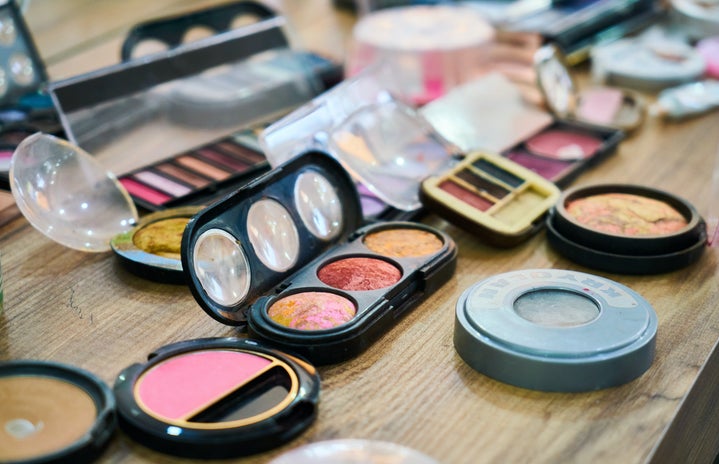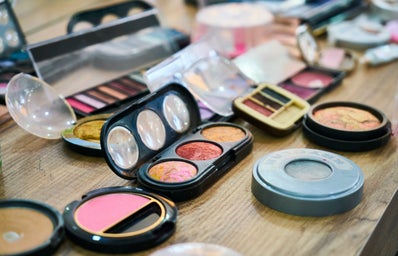The 2010s saw the rise of the influencer, a new genre of celebrity that not only held influence over their fanbase but also held a chokehold on the beauty industry. If you were there, you remember the excitement when your favourite YouTube star announced their own brand or the cultural buzz over the launch of new products or collections. People were wearing and buying more makeup than ever, with the beauty industry growing from $196 billion in 2005 to almost double that at $326 billion by 2015.
Yet recently, influencer beauty brands have struggled to stay afloat. Within the last year, Addison Rae’s Item Beauty announced a ‘hiatus’, and was removed from stores, whilst influencer-associated brand Morphe, announced it would be shutting all U.S. stores in January. Does this mean that influencer beauty brands are over? Kind of, but not in the way you’d think.
changing public perceptions
Elle magazine claims associating influencers with specific products acts as a ‘huge risk’ as ‘generally history has taught us that the individual will disappoint’. This has been seen time and time again, as ex-fans become upset at supporting a product that has benefitted someone they deem as controversial. This has led to a great shift in the perception of influencer brands and the dwindling sales of companies that were once wildly successful.
Arguably, the scandal that had the largest impact on the perception of influencer beauty brands was the ‘Dramageddon’ scandal of 2019. To keep it short, this scandal was a BIG deal in the online beauty space. It involved the likes of the biggest beauty influencers at the time, mainly; James Charles, who had released the ‘artistry palette’ with Morphe; Tati Westbrook, who owned both Halo Beauty and Tati Beauty; and Jeffree Star, who was releasing the ‘conspiracy palette’ under his own brand with fellow YouTube star Shane Dawson.
The scandal involved each of them exposing and alleging concerning behaviour about one another, causing each of their businesses and associated products to drastically decline in sales. As a result, Morphe dropped Charles as a business partner, and discounted the ‘artistry palette’ online; Westbrook’s brands managed to stay open until 2021, when she shut down both companies for good; Star’s massively anticipated and marketed ‘conspiracy palette’ with Dawson was quickly removed from stores, and ex-fans went online to share videos of them binning, burning and destroying the palette.
The fallout had a massive impact on the perception of influencer beauty brands, with consumers becoming more reserved when selecting what products to buy. Along with the rise of TikTok, which created an even more saturated market, Gen Z has evolved to become smarter consumers and more resilient to products branded with an influencer’s name.
Not only that, but the pandemic and subsequent cost of living crisis have changed the way we view luxuries too. Simply, our priorities have changed. Instead of over-consuming makeup in a great supply, more ‘natural’ and simple makeup looks are in fashion. There has also been a greater emphasis on skincare, an industry which is set to grow over $50 billion by 2025.
brand success and relatability
In 2010, makeup artist Huda Kattan launched a blog about all things beauty. She soon gained a following, and in 2011 released a collection of false eyelashes that would soon be used by celebrities and influencers alike. In 2015, she launched Huda Beauty in US stores and is now worth a whopping $560 million. The brand’s continued success in an industry where other influencer brands have failed may be the key to answering whether beauty brands are over or evolving.
A 2019 study by the International Journal of Advertisement suggests that relatability plays a crucial role in the success of influencers. Take influencer Emma Chamberlin, who started off her career creating vlogs as a teen girl. She quickly gained a following who loved her relatability, but as her fame grew and she became richer, fans found her to be out of touch.
Kattan avoids this backlash by never giving herself to the public in the way Chamberlin, and a lot of other influencers do. This helps her to avoid business ruining backlash, that other influencers have had to face. This also allows both her and her brand to have separate identities and lets the products speak for themselves. This approach has helped pave the way for several celebrity brands, such as Fenty Beauty and Florence by Mills, which are greatly successful in having their own brand identities.
over or evolving?
Only time will tell if influencer beauty brands are truly over or just evolving. What we do know is that Gen Z are not as fooled by influencer marketing anymore, and place the quality of products at a higher priority.
In terms of the brands themselves, this shift has left a lower demand that makes it extremely difficult for new businesses to grow. We will probably continue to see brands shut down, with those most able to adapt surviving.
The role of the influencer within beauty brand marketing will continue to evolve too. We are seeing many creators be used in short-term campaigns, a change which benefits brand owners by separating brand identity from the influencer themself. We are also seeing companies such as NYX and Revolution have great success in releasing limited-edition collections with influencers. After all, they are here to influence.




